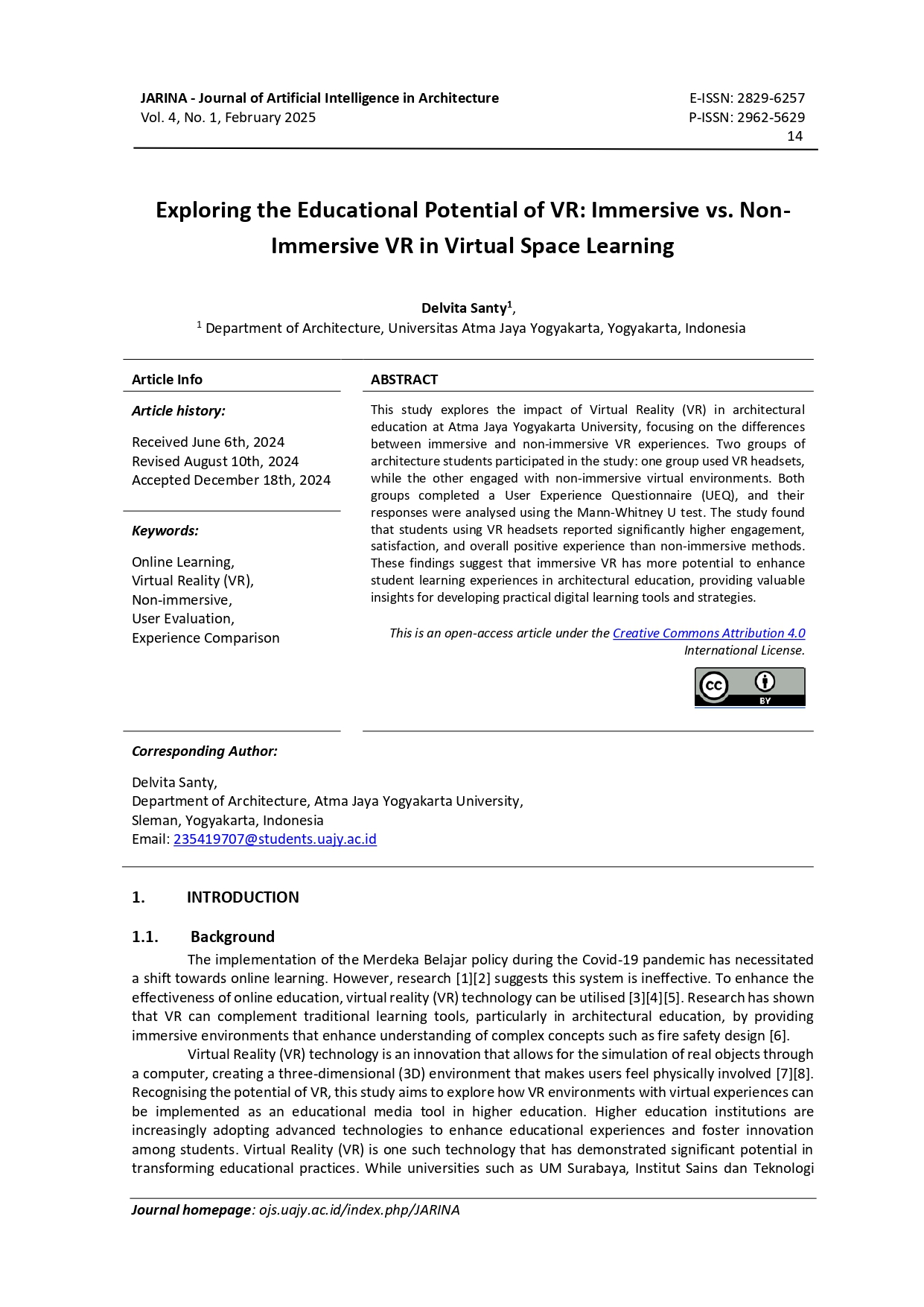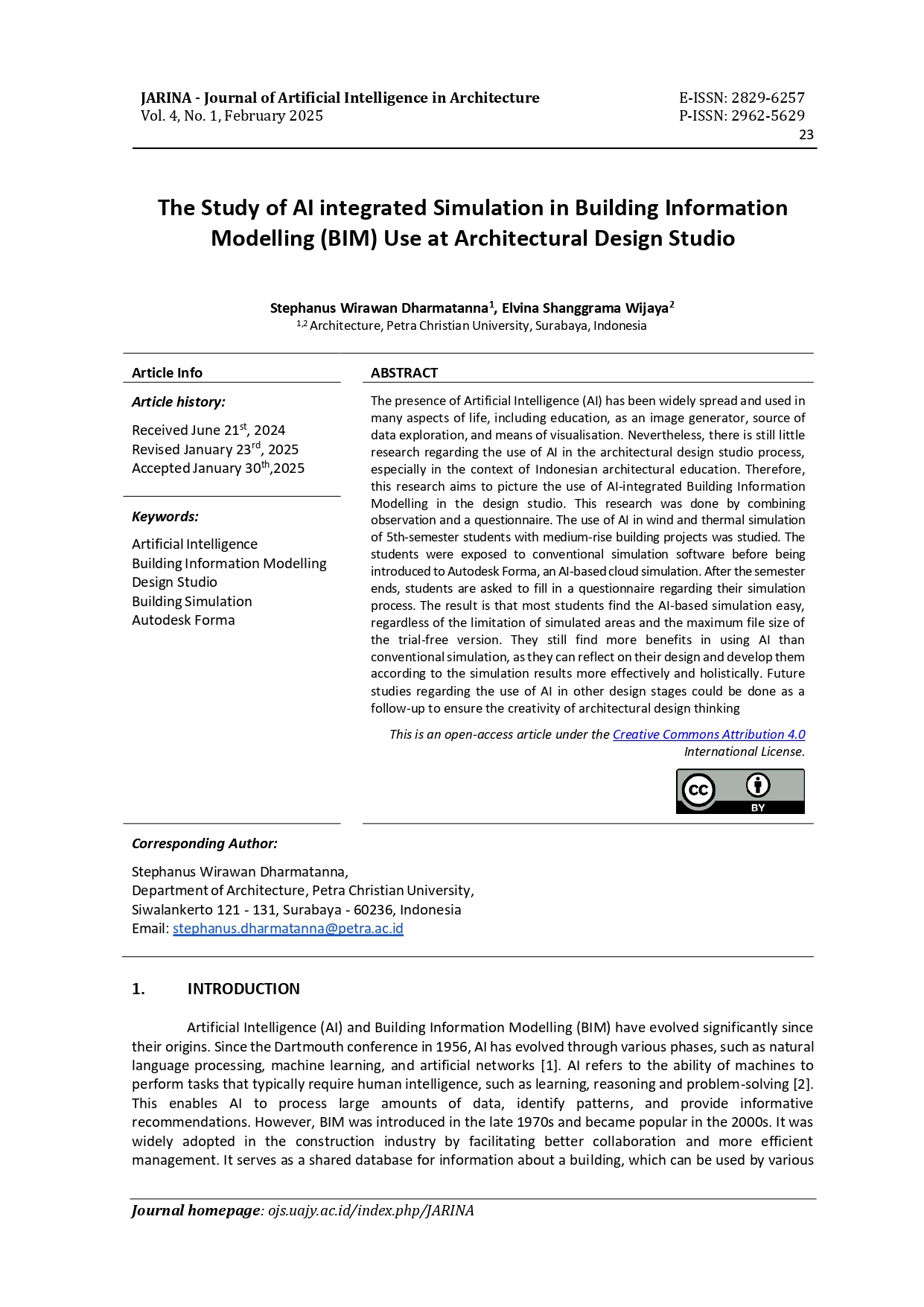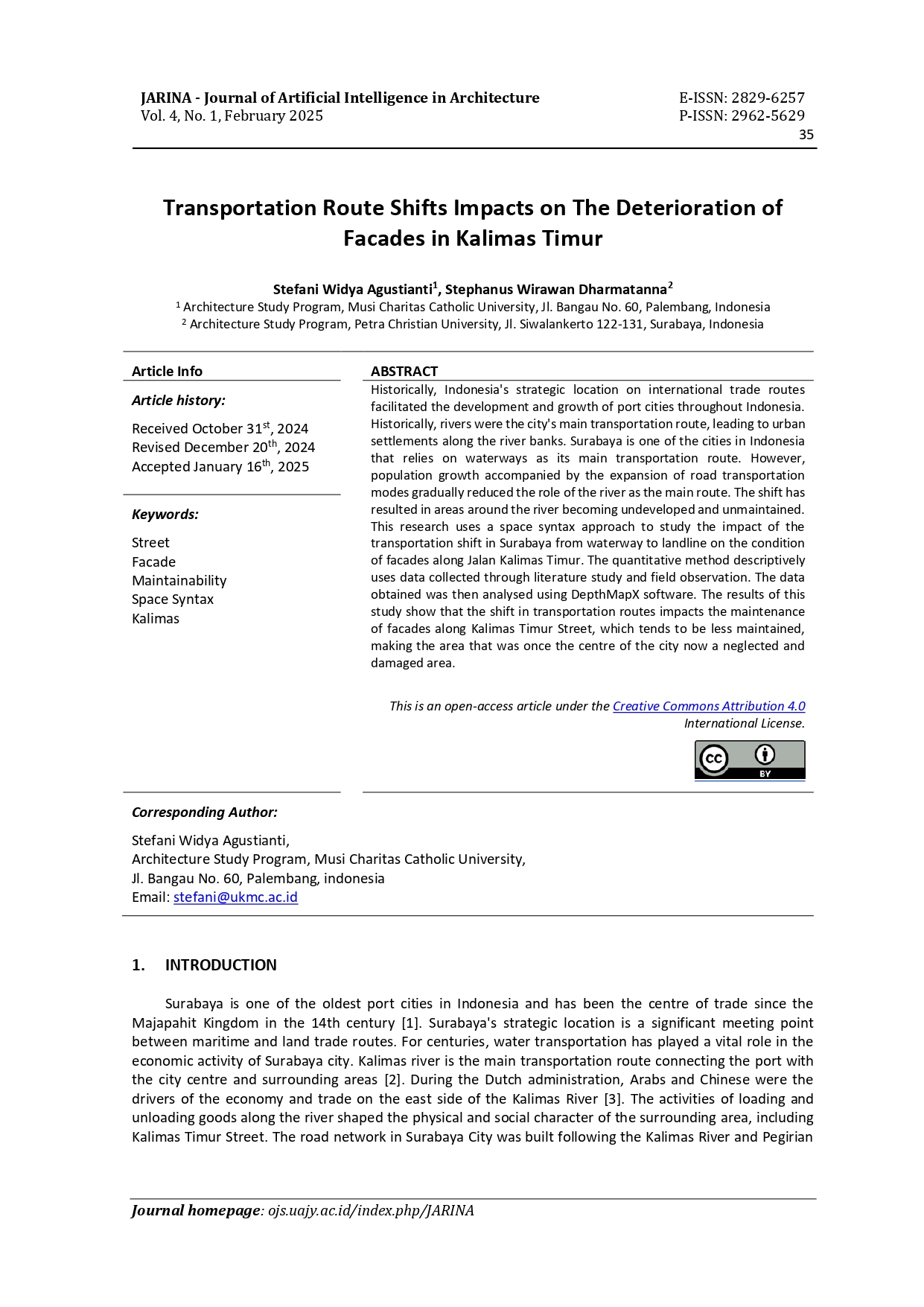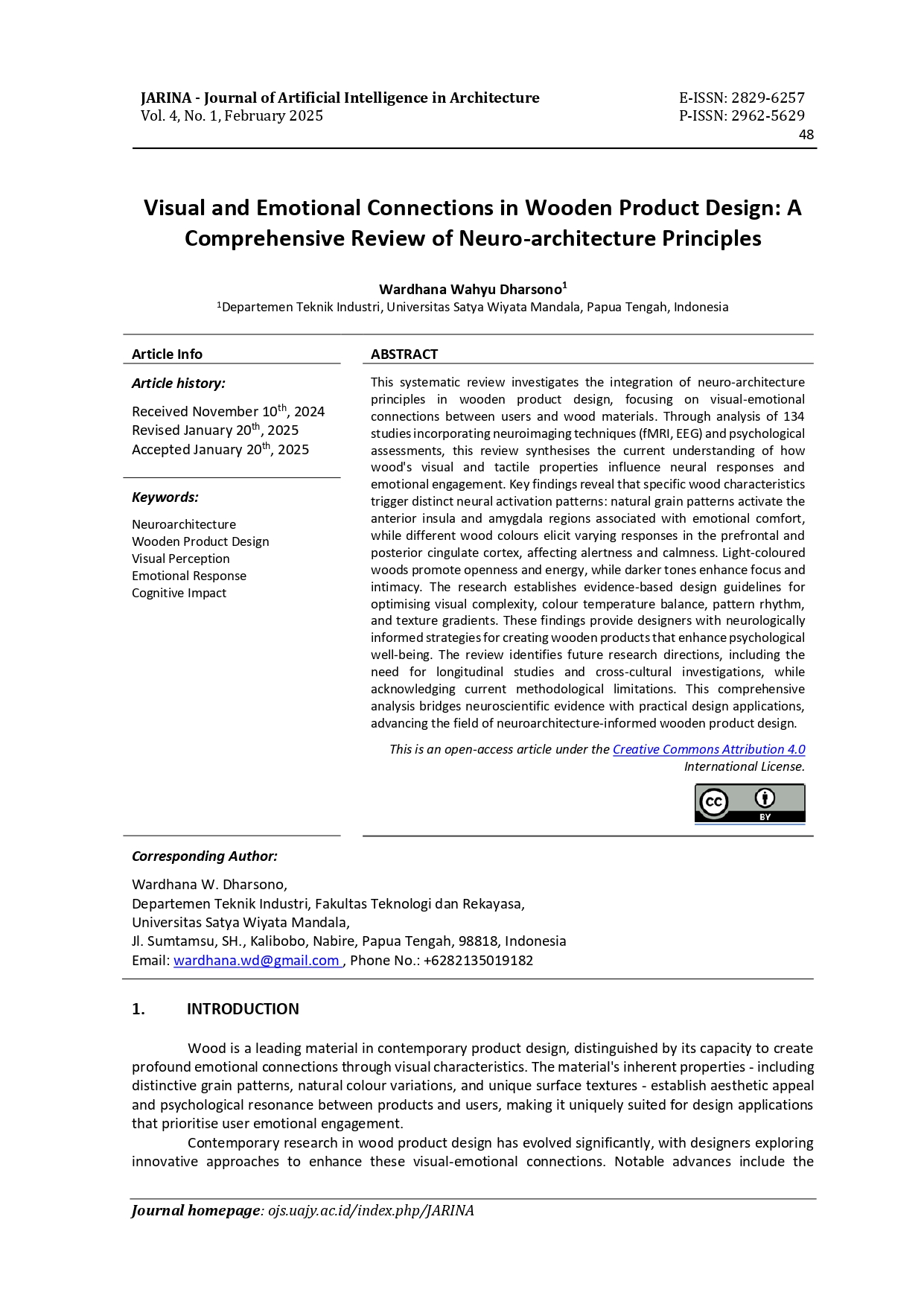Vol. 4 No. 1 (2025): The AI-Driven Evolution: Transforming Architecture, Design, and Urban Spaces through Innovation and Immersive Technologies
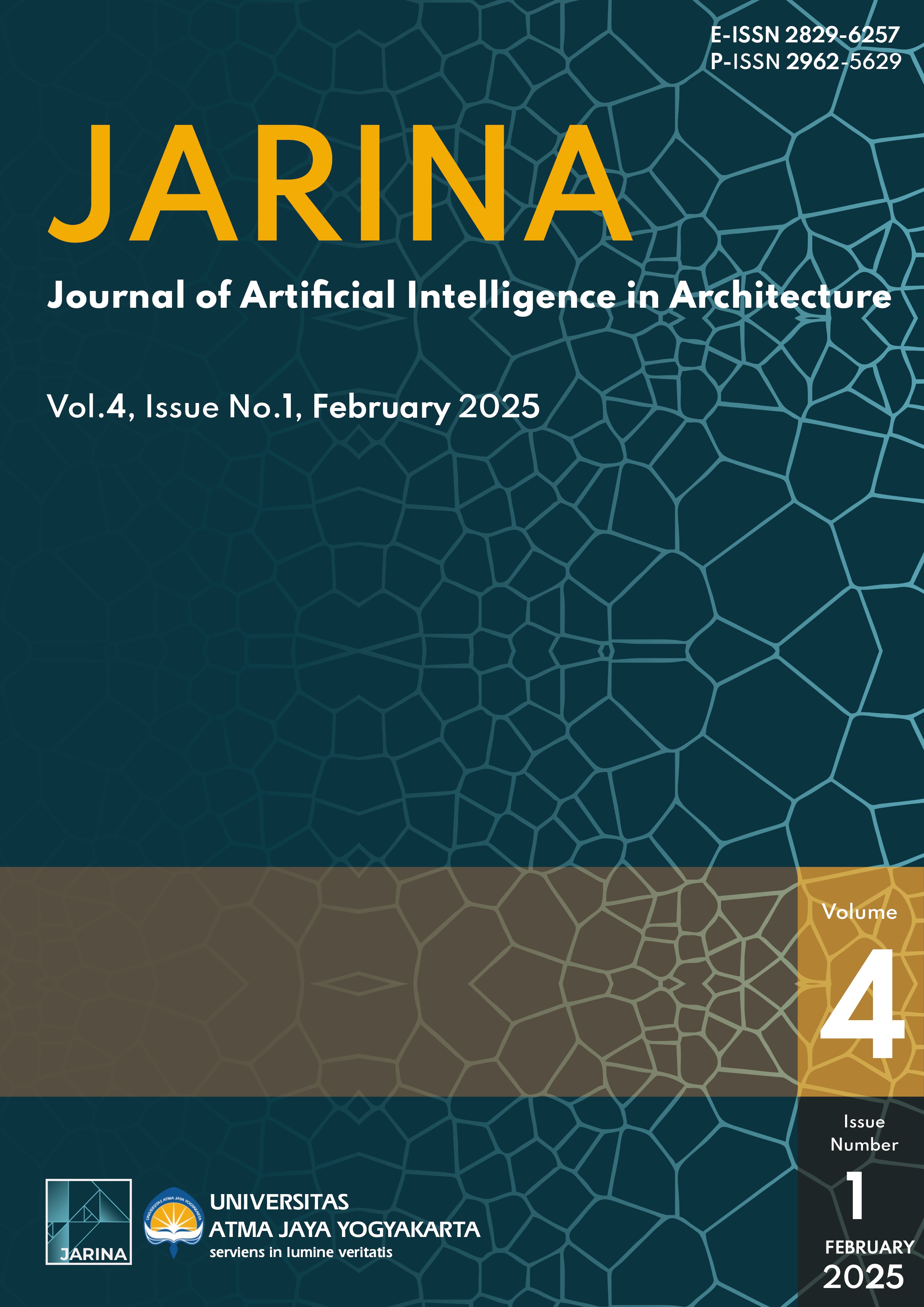
In recent years, the field of artificial intelligence (AI) has witnessed remarkable advancements, significantly impacting various industries, including architecture. This collection of papers explores the deepening relationship between AI and architectural practices, examining how AI fundamentally reshapes the realms of design, education, urban planning, product development, and human perception. As AI becomes increasingly integrated into diverse disciplines, it presents both exciting opportunities and formidable challenges, potentially transforming our built environment in previously unimaginable ways.
The seventh issue of JARINA (Journal of Artificial Intelligence in Architecture), with the title “The AI-Driven Evolution: Transforming Architecture, Design, and Urban Spaces through Innovation and Immersive Technologies”, presents five papers that explore the integration of AI into research, design, and education within the architectural sphere. The first paper offers a comprehensive review of AI's origins and rapid evolution, with a particular focus on its active influence within the interior design industry. The second paper investigates the role of virtual reality (VR) in architectural education, highlighting how immersive VR technologies can potentially enhance learning experiences. The third paper delves into the incorporation of AI into Building Information Modeling (BIM), examining its transformative effects on architectural design studios by optimizing workflows, predicting design outcomes, and assisting in real-time decision-making, thereby altering the dynamics of the architectural design process. The fourth paper assesses the impact of shifts in transportation infrastructure on urban facades and architectural spaces, analyzing how these changes alter the perception and function of architectural environments. Lastly, the fifth paper explores the psychological and emotional connections with wooden product design, emphasizing the impact of design on human well-being. By applying neuro-architectural principles, this paper investigates how design elements can foster emotional responses in enhancing user experiences. These papers illustrate the multifaceted ways AI influences the architectural and design disciplines, providing a comprehensive perspective on its impact on creativity, education, urban environments, and human-centred design. As we continue to explore the vast potential of AI in architecture, it is evident that these technologies will play a crucial role in shaping the future of the built environment, influencing both the design process and our experiences of the spaces around us.
In light of this exploration, we invite researchers in digital art, informatics, neuroscience, architectural technology, building sciences, urban design, and related areas to contribute to JARINA. We hope that the papers presented in this issue will inspire and enrich our readers' understanding of architecture and digital technology. Lastly, we express our gratitude to all the authors and contributors involved in the publication of this seventh issue.
Khaerunnisa
EDITOR IN CHIEF
J A R I N A
Journal of Artificial Intelligence in Architecture

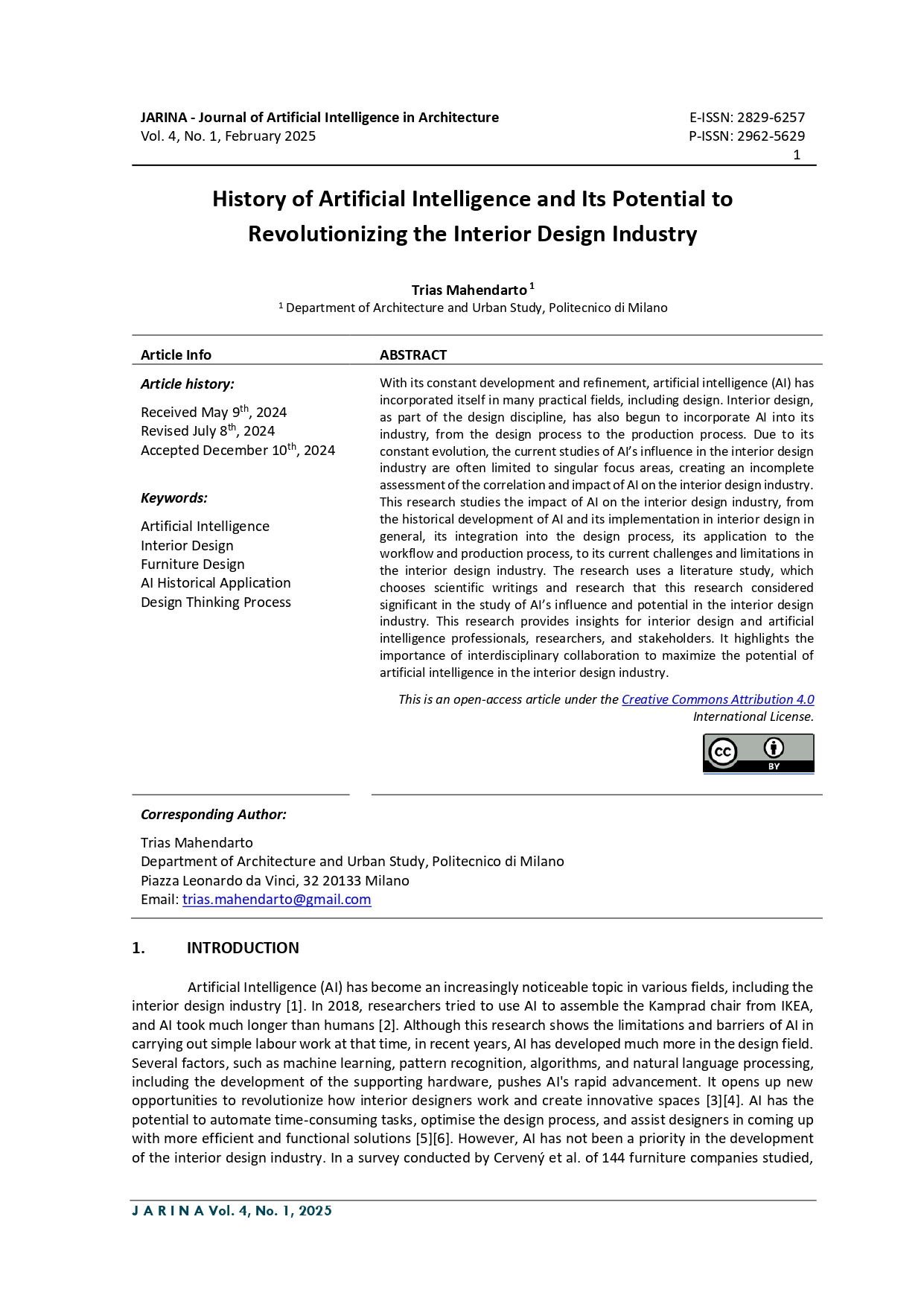
 Abstract views: 421 times |
Abstract views: 421 times |  Downloads: 521 times |
Downloads: 521 times |
